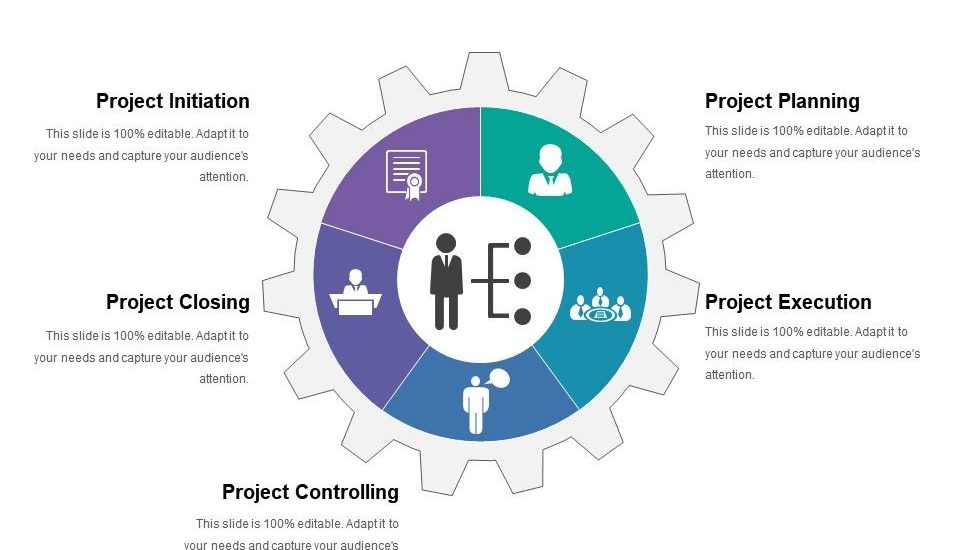What Enterprises don’t tell you about profitable project management? Find the End-to-End Process
- September 5, 2019
- Posted by: admin
- Category: Project Management, Services

Let’s dive straight in.
Project Management is planning and managing a series of tasks, especially when there are complexities within the team working on a project or within the task. The aim is to achieve the stipulated ‘deliverable’ at the project end and make it a success.
Now, what is a deliverable?
Well, a deliverable can be a wide array of things; it can be something tangible like a new product or an intangible entity like a new process within an organization.
Whatever the result be, it will always call for certain changes within the business time limit. Some may vouch for modification to the existing status quotient and some others may wish to add something new to the process.
Therefore, choosing the right approach is crucial to the success of project delivery – thus, the need for Project Management Services to save the day.
A project that needs to be formally managed could fall under any business vertical. Some of the most common areas include:
- information technology
- customer services
- new business development
- administrative tasks and processes
- health and safety requirements
- financial, legal and professional procedures
- research and development
- product manufacture
Crucial Stages of Project Management
Next, in line are stages. There are certain fundamental stages of managing any project that you should follow.
What are they? We have listed below are major ones. Some (the more complex ones) may contain sub-stages.
- Identify business requirements and document them
Find out the end goal of the project and document the business requirements to reach the goal. Here are some important questions that you should figure out.
- What is within scope?
- What is out of range?
- Are any assumptions being made?
- Have constraints been imposed?
- What is the expected time scale?
The document should include the aim of the project so it can live up to the expectations of the stakeholders. And not to forget, the ‘acceptance criteria’ that will ultimately define the success or failure of the project.
- Document functional specifications
Step one documents only that is required. But it does not specify how the deliverable will work in real-time. Therefore, it is essential for projects (especially with tangible and technically sophisticated deliverables) to produce additional documentation.
- Create the project plan
The project plan should include details about
- the task needed to complete the project
- people and equipment involved
- time estimation
- dependencies and
- milestones
The task should be scheduled within the decided time limit keeping in mind the project budget. Project management tools and techniques like Critical Path Analysis Flow Diagrams and Gantt Charts should be of help.

- Assign project tasks
Whatever plan is drafted on paper needs to be put to action. Therefore, assigning it to an individual or team is essential. They should be aware that the task involves dependencies and timescales. Make sure the deadlines are realistic and achievable.
- People management
The role of a project manager is multifold. Apart from having a bird’s eye view on the overall project, he/ she needs to be a people’s person. He/she should keep the team motivated, encouraged, and informed. Do not overlook casual conversations because they are often more informative.
- Review progress
Make sure estimates, deadlines and milestones are on track. And if the need arises, you can always tweak them to keep the estimates valid. Note that circumstances can change during a project, but make sure to question the validity of each change and keep the fundamental business requirement intact for cross-reference.
- Project acceptance, implementation and follow-up
A project can only be implemented in the working environment when the final product has been tested, the team has been trained, and stakeholders have signed it off. And once, it has been done, hold team reviews to understand what made it a success and what could have been done better.
What does a project manager do? 4 Top skills
The Project Management Institute’s (PMI)® A Guide to the Project Management Body of Knowledge (PMBOK Guide) states:
“Project management is the application of knowledge, skills, tools, and techniques to project activities to meet the project requirements.
So, what does a project manager do?
A huge chunk of a project manager’s job responsibility is to deliver a project according to the agreed-upon boundaries for project completion.
But to fully understand the question, here’s how a project life cycle looks like.

A project manager is the primary force behind the success and failure of a project. It is his job to manage the workflow and apply tactics and skills to get things done.
If you are considering a career in project management, you might want to catch up on the following skills to make it big as a project manager.
- Effective Leadership
A project manager needs to possess exceptional leadership qualities. He should be able to lead and manage his team at the same time. He is the sole source behind the project vision. So, to make things work in coordination, he needs to instill the right sense in his team to perform.
To sum up, the job of an effective leader includes:
- setting goals
- resolving conflicts
- evaluating performances
- managing project finances and
- identifying the best tools
- Time Management
He should adhere to the expected time limit and schedule his team members’ tasks accordingly. Also, because he is responsible for managing his own time. He should know when to say ‘no’ to a task so that he can meet his deadline.
- Communication
A project manager’s job is to understand the project requirements and employees’ demands at the same time. He should be able to communicate within his team and get his message across. Then again, he should remain in constant communication with the client, so there are no nasty surprises down the road.
Tips to improve communication:
- Host status meetings
- Send clear status reports
- Create project presentations
- Risk Management
When a project does not go as planned, it is the project manager who is being blamed. The key to mitigating risks is ‘experience.’ He should have the ability to foresee what can go wrong during the project lifecycle. Here are a few things that can be done through:
- look at the probability,
- predict the cost
- come up with mitigation strategies
- trace the potential risks to remain in full control of a project
This leads to the next crucial question – why do projects fail? If there’s a perfect world, every project would be on time and within budget. But reality narrated a different picture. We have come up with a few common reasons why a project fails even in the hands of a project management consultant.
20 Common Reasons Why Project Fails
- An incompetent project manager unwilling to make the right decisions at the right time.
- Struggle to appoint the right skilled resources to avoid project delay or project failure.
- No management support or lack of leadership alignment to mitigate project risks.
- Lack of a flexible risk management process and when a situation arises, no one knows how to react.
- Missing project management tools that can enhance the team’s productivity and increase accuracy.
- Lesser involvement of project managers in the smallest components that should not go unnoticed.
- Lack of proper planning leading to inappropriate estimations and half-cooked preparation.
- A lack of communication and information distribution details should be clearly defined in the plan.
- No change management plan which impact should have been documented, approved and presented before key stakeholders.
- Involve in the company’s internal politics which should have instead supported competency, skill, professionalism and transparency.
- Use of new tools that the team is not familiar with. Project managers should add tools to yield productivity and not just to fulfill audit compliance.
- Lack of unity among project team members. There could be many reasons – conflicting interests or personality differences.
- Inadequate quality assurance to evaluate the quality of the development process.
- Inappropriate prioritization of requirements that negatively impacts the overall system.
- Inability to manage stakeholders and respond to them leading to loss of support and project failure.
- Saying ‘yes’ to even the most absurd client requirement. Before you commit, make sure to analyze the pros and cons of your decision.
- Unrealistic expectations with a lack of clarity and focus. You need to set goals for individual team members.
- Not delivering bad news to stakeholders and talking through problems.
- Avoiding code reviews leading to increased risk of schedule slippage which can otherwise produce a stable, quality deliverable.
- Skipping prototyping like documentation and validation for correct understanding, visual walkthrough of what was expected and what is being built and gaining feedback.
What next? The dealing process.
5-Step Process for Project Issue Management
Step 1: Identify the issue and find out how it has happened. Assign the issue a number, an owner, add a description and the date it was raised.
Step 2: Look for the impact the problem is having on the project and categorize it as high, medium, or low.
Step 3: Review possible measures that can solve the scenario.
Step 4: Execute the action plan that you have identified as a team.
Step 5: Finally, monitor and review your actions until you resolve the issue.
Conclusion
When things go as planned and are delivered as expected, it’s time to wrap up the work. But as a project manager or a project management service provider, it is crucial to finish the job by striking the right chords.
Get your team together and thank them for their efforts. If you can meet up, get personal – go out for a quick lunch. Even better if the company’s budget can fund it.

